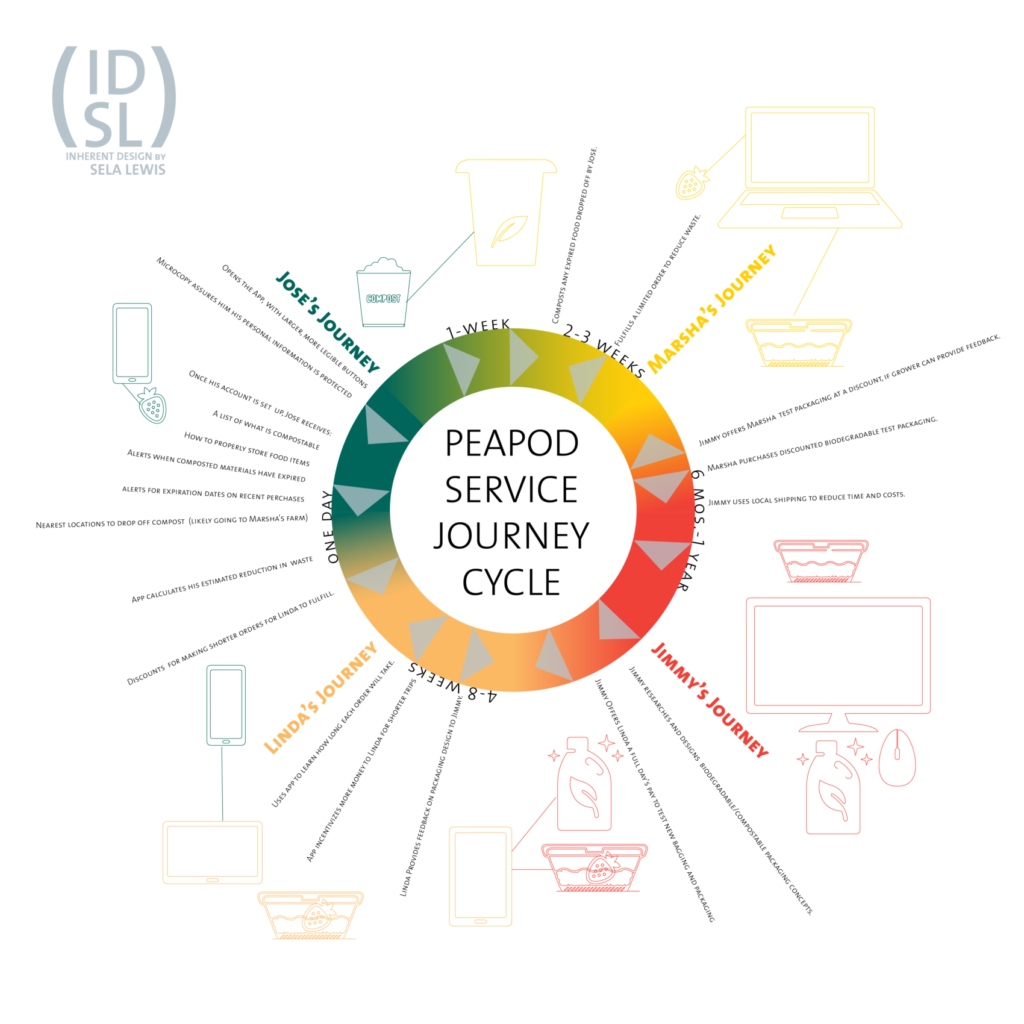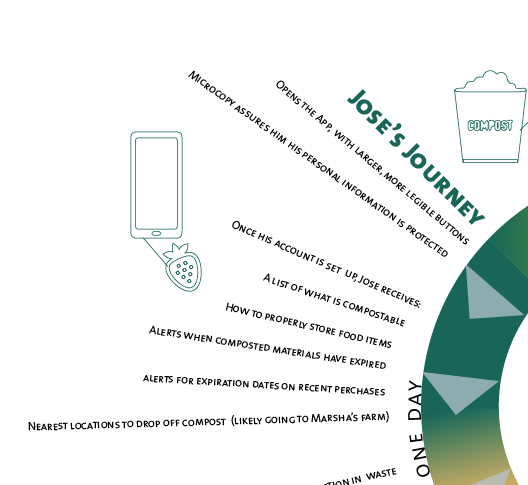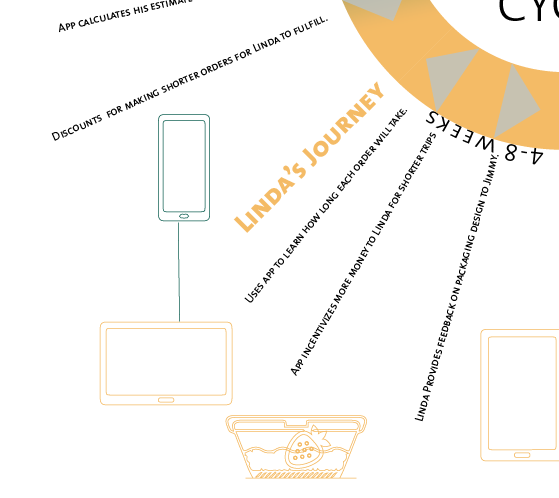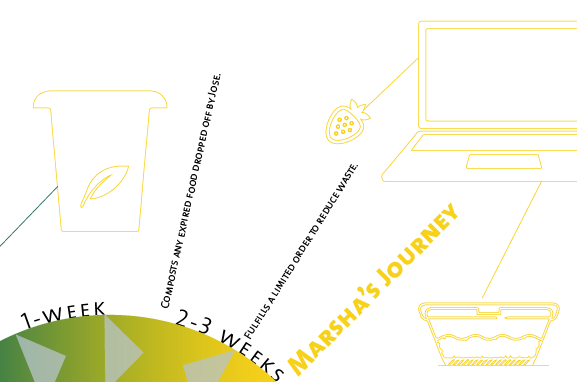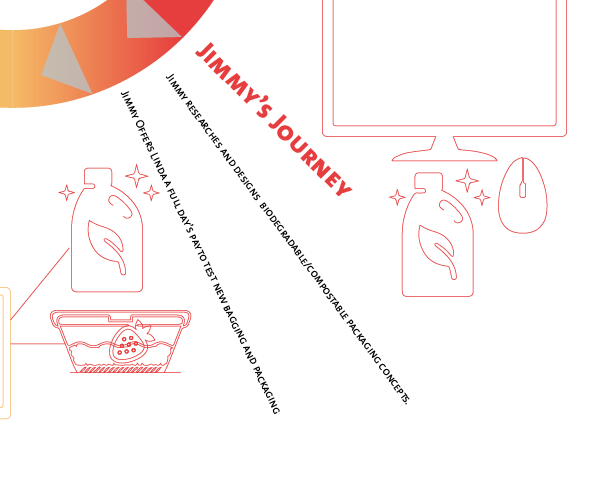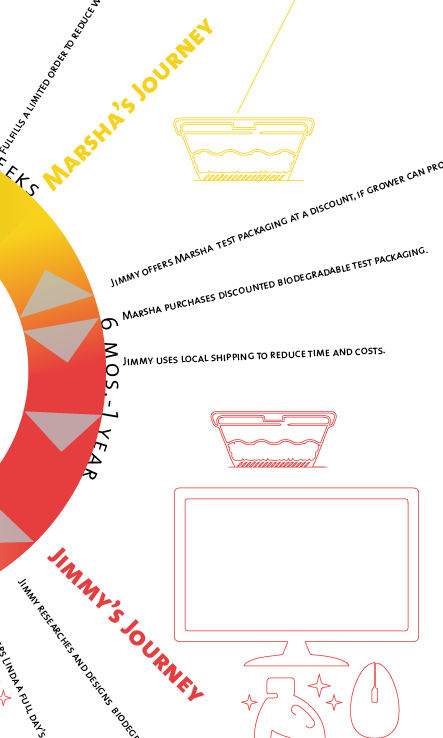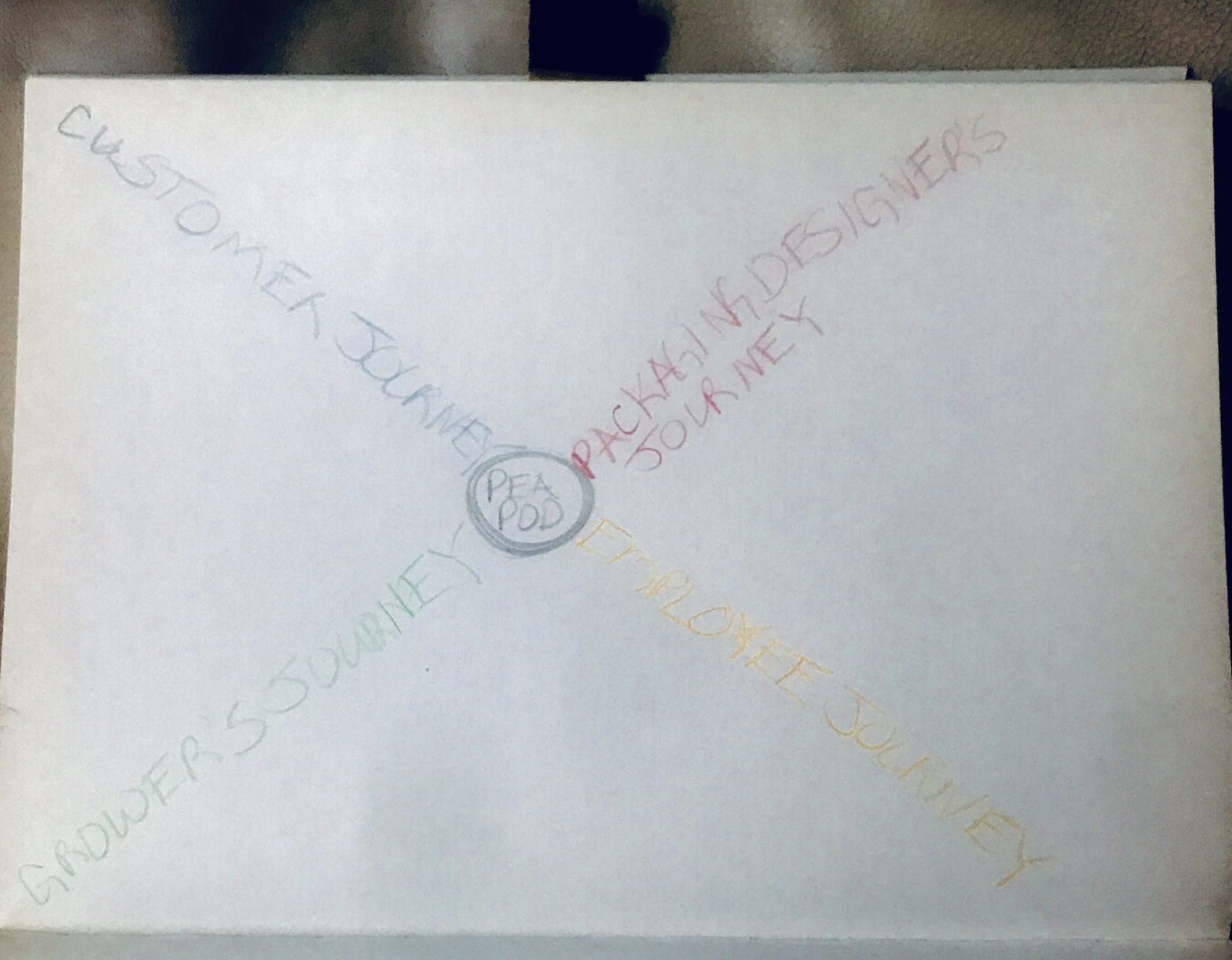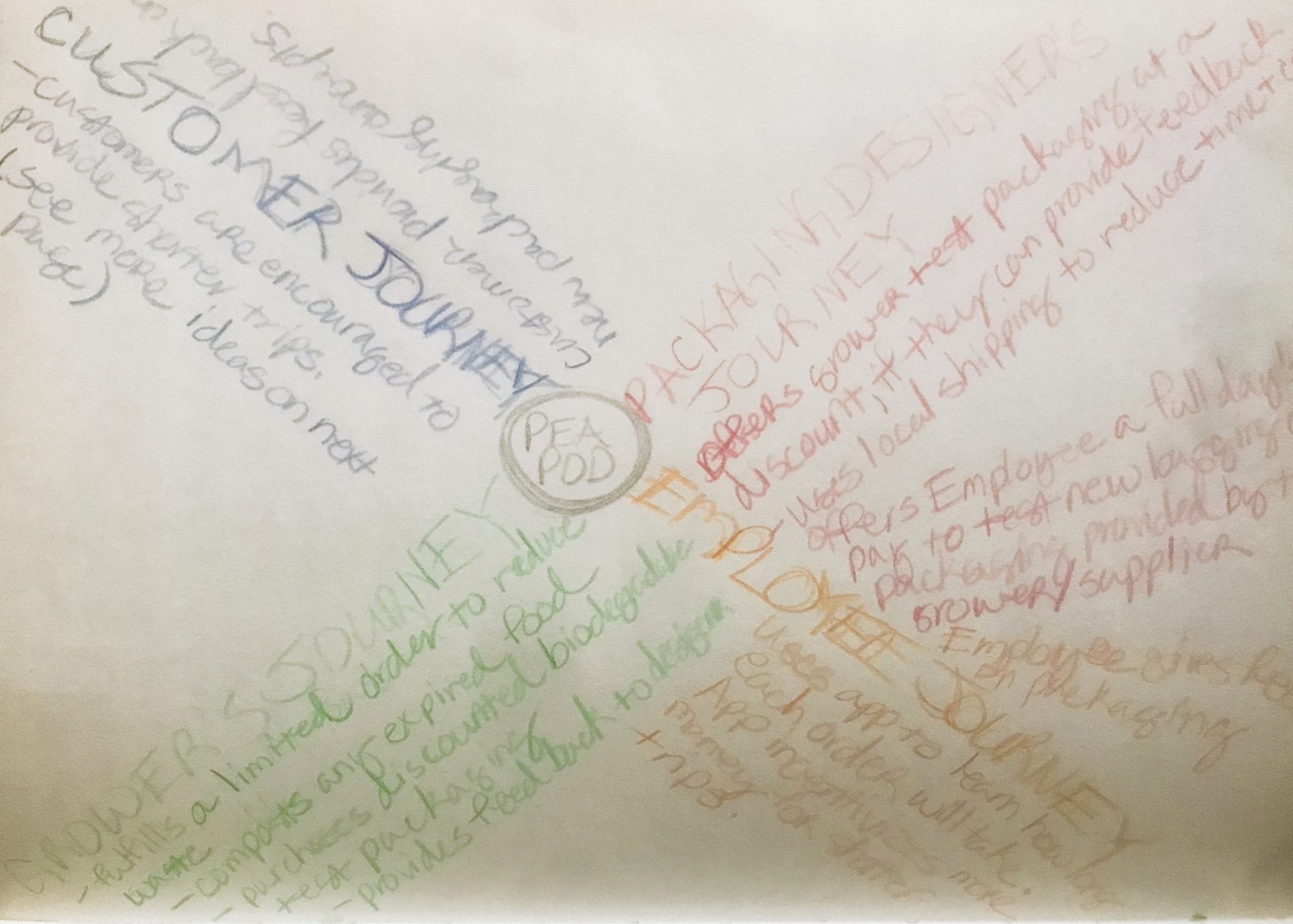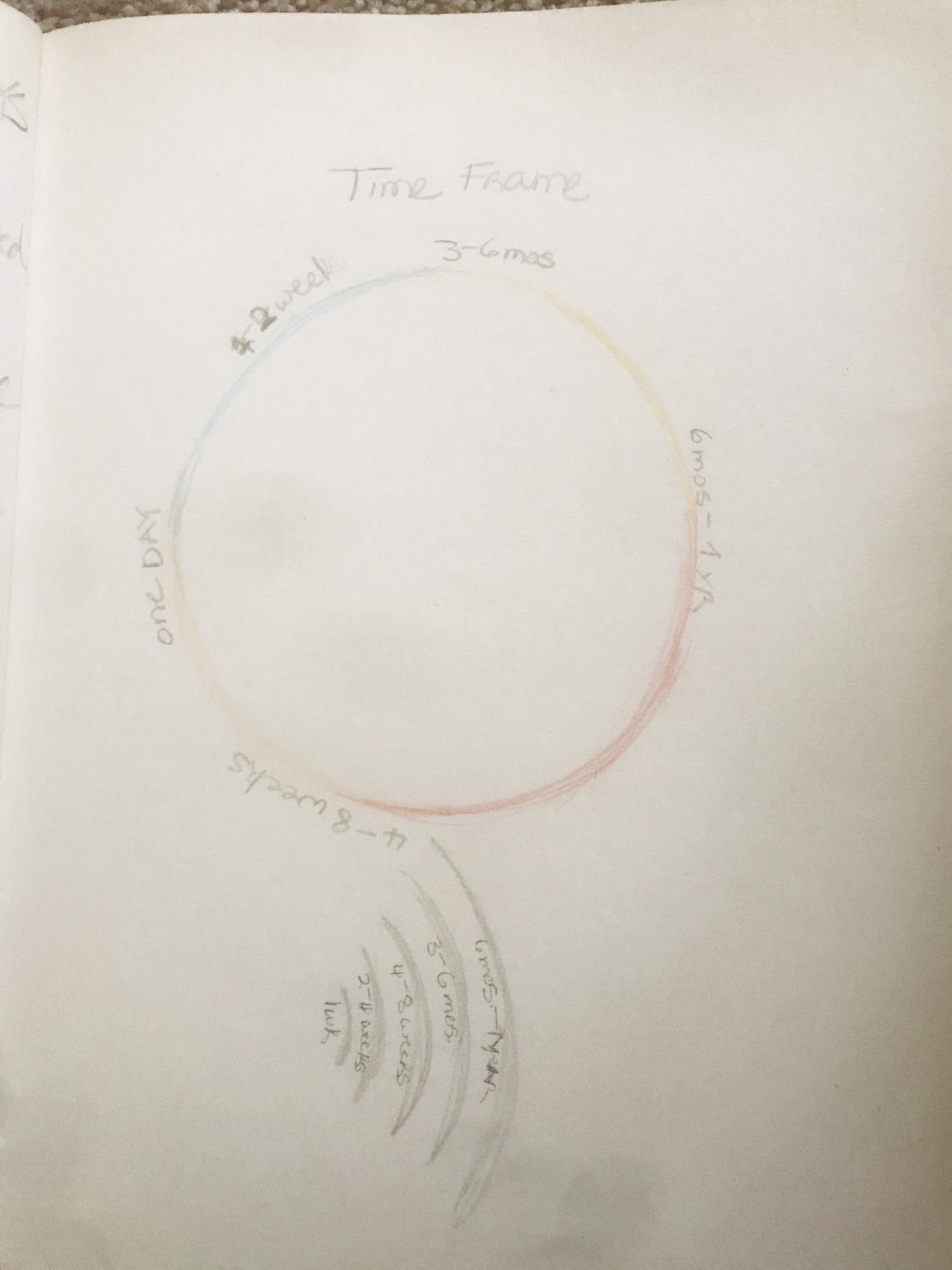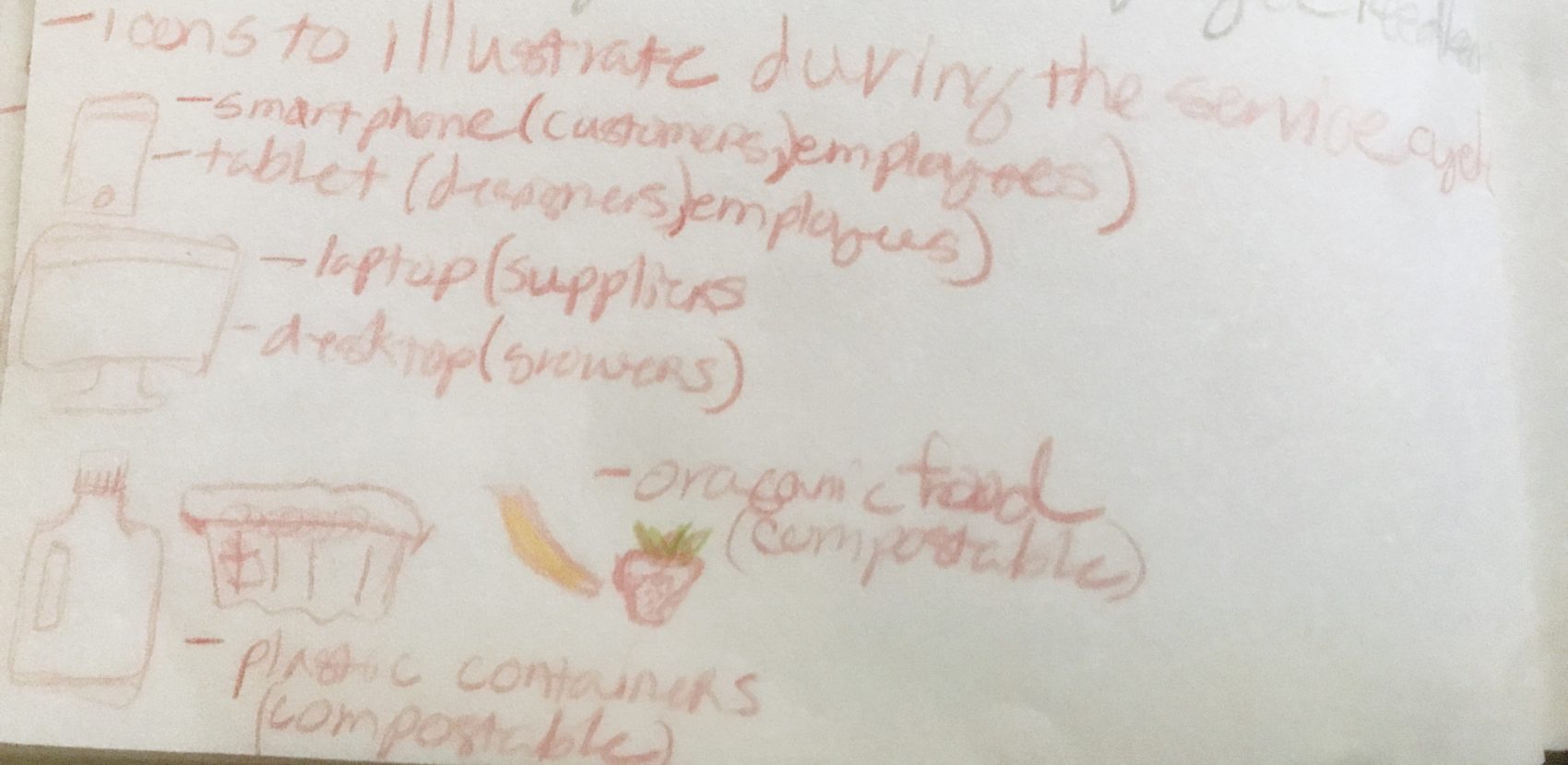
UX Challenge | Streamline Service for Peapod
UX Challenge | Streamline Service for Peapod
Description
CLIENT GOALS
Streamline the entire service process for the grocery delivery service Peapod, including food growth, supply, packaging, delivery, and consumption, while also minimizing waste.
USER’S GOALS
Growers/Suppliers: Provide goods at best price, most efficient timeframe, and quality level that also aligns with values.
Packaging Designers: Design biodegradable/sustainable food packaging at the best price, most efficient timeframe, and quality level that also aligns with values.
Employees: Deliver ordered goods at the best price, most efficient timeframe, and quality level that also aligns with values.
Customers: Procure food for self and family at the best price, most efficient timeframe, and quality level that also aligns with values.
RESEARCH
- Analysis of sustainable farming practices;
- Market research in packaging design and sustainable packaging options;
- Market research in grocery shopping and food waste;
- Competitive analysis of grocery services (Instafresh, Amazon Fresh, Fresh Direct, Shoppers Grocery Delivery, Shipt, Google Express, Jet, Instacart, Brandless, Thrive Market); and
- Competitive analysis of delivery services (Grub Hub, Door Dash, Uber Eats)
- Market analysis of public composting initiatives;
FINDINGS
For Growers/Suppliers
- Sustainable farming simply means the production of food, plants and animal products using farming techniques that prove to be beneficial for public health and promote economic profitability. It draws and learns from organic farming.
- Composting is one of the most economically reliable options for sustainable farming.
For Packaging Designers
- The main complicating factor with recycling is that most packaging is made out of two or more materials, and it’s often too difficult or expensive to separate those materials to recycle them. To combat this problem—quality vs. sustainability of a flexible package—biodegradable and compostable options should be considered n the design and manufacturing of package design.
- “Biodegradable” simply refers to any material that can be broken down into its smallest possible components by living micro-organisms without causing harm.
- “Compostable” packaging breaks down into individual components: water, CO2, biomass, and inorganic compounds. Composting leaves behind no visible residue.
- Whatever your plan for increased package sustainability in the future, it’s important to your consumers that sustainability be prioritized throughout the entire supply chain.
For Grocery Delivery Services
- Online grocery sales are predicted to capture 20% of total grocery retail by 2025 to reach $100 billion in consumer sales, according to a study by the Food Marketing Institute conducted by Nielsen.
- Nielsen: 30.0% of millennials are already ordering groceries online and having them delivered to their home. Generation Z: 28.0%; Generation X : 22.0%
- The number of industry operators is expected to increase at an annualized rate of 5.3%, totaling 2,584 companies.
For Customers
- Reducing waste can come down to eliminating overbuying, understanding ripeness and expiration timelines of perishable foods, bulk order items, and relocating unused food.
- Michigan State University’s Food Literacy and Engagement Poll says 88 percent of 2090 surveyed take steps to reduce food waste at home. 71% reduce waste by not purchasing excess food and consuming it before it spoils.
- 30-40% of food produced ends up in a landfill. 22% of garbage in landfills is food waste.
- Main engagement in reducing food waste: 94% of consumers age 55 and older and 81% of those under 30 years old.
- Of the 12 percent of Americans who say they do not take steps to reduce food waste at home:
– 31% say they do not waste food
– 23% are not familiar with the term “food waste”
– 21% do not know how to reduce food waste
– 20% are not concerned about it
– 18% do not have the time
– 48% of Americans say they never, rarely, or aren’t sure how often they consume genetically modified organisms, often
called GMOs
– 49% say they never or rarely seek information about where their food was grown or how it was produced, with an
additional 15% responding once a month
– 41% would be willing to buy a GMO-derived fruit or vegetable that stayed fresh longer than currently available produce
Personas
Customer Persona: Jose
Name: Jose Ramos
“You’re only as old as you feel!”
Age: 78
Gender: Male
Race/Ethnicity: Hispanic/Latinx
Marital Status: Widower
Income: $36,500/yr. in fixed benefits
Professional Background: Retired, former military veteran. Associates Degree in Data Entry.
Defining Traits: Loyal, consistent, cooperative
Interests: Fishing, hiking, auto repair
Challenges and Frustrations: Would like to learn more about composting, recycling, and eating well, but has limited access. He’s still disposing of waste in the traditional way because his apartment building limits his options. He does not know where the nearest locations are for composting or recycling. Jose likes the convenience of grocery delivery but finds the app frustrating. The buttons are too small and all the steps move too quickly. Jose is also unsure of the safety of his personal information.
Employee Persona: Linda
Name: Linda Hmeleski
“When life gives you lemons, make tomato juice.”
Age: 47
Gender: Female
Race/Ethnicity: White/Caucasian
Marital Status: Divorced, two kids
Income: $38,000/yr.
Professional Background: Retail professional for 20 years and was recently laid off. Now a full-time delivery driver for Peapod.
Job Title: Delivery Driver for Peapod Delivery
Defining Traits: Caring, committed, loyal
Interests: Writing, music, fashion
Challenges and Frustrations: Finding out too late how long it will take to fulfill each order. Not knowing the capacity of orders. Working/carrying difficult packaging.
Packaging Designer Persona: Jimmy
Name: Jimmy Nguyen
“Better packaging can make the world a better place.”
Age: 29
Gender: Male
Race/Ethnicity: Asian American
Marital Status: Single
Income: $78,000/yr.
Professional Background: Bachelor of Arts, Industrial Design, Savannah College of Art and Design
Job Title: Packaging Designer/ THE AGENCY
Defining Traits: Creative, Empathetic
Interests: Photography, Volunteering
Challenges and Frustrations: Trying to design more biodegradable and compostable packaging with a modern and sleek appeal. Difficulty getting user testing from customers. Hard to get growers and suppliers to try out new packaging design concepts.
Grower Persona: Marsha
Name: Marsha Perkins
“Growing healthy food runs in the family.”
Age: 42
Gender: Female
Race/Ethnicity: African American
Marital Status: Married, two kids
Income: $65,000/yr.
Professional Background: Bachelor’s Degree, Sustainable Agriculture, University of Massachusetts-Amherst
Job Title: Owner, Perkins Family Farm
Defining Traits: Inventive, Industrious, Humourous
Challenges and Frustrations: Wanting to use more sustainable biodegradable packaging, but they are expensive, inaccessible, and unreliable.
The Peapod App should act as a central feedback loop for all journeys
Using the framework of service blueprinting, I took the linear approach of systems and made it circular. Rather than think of the start- and end-point of services, I illustrate the services Peapod provides as a continuous feedback loop between Jose, Linda, Jimmy, and Marsha.
Customers will get an alert of when it is time to compost.
Employees can learn which routes are the shortest and most efficient.
Growers and suppliers can learn how many lbs./kilos of carbon dioxide are eliminated by customer’s purchases and composting practices. They can also find out what percentage of their local customers are sending their compost to local farms.
Packaging designers can learn how many growers, suppliers, and customers are purchasing items using biodegradable/compostable materials. They can learn which products are easier to carry based on employee/grower/supplier feedback.
Service Design Sketches
Date
June 3, 2019
Categories
- Service Design
- User Experience
- User Research


